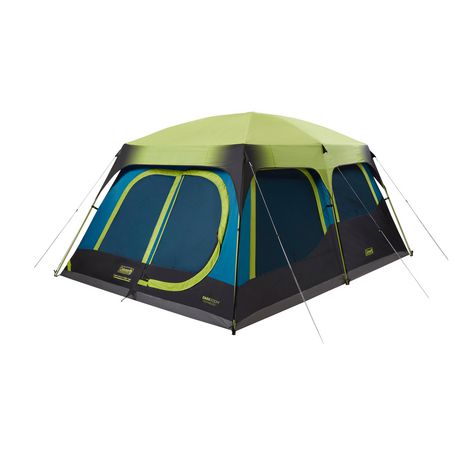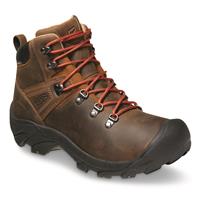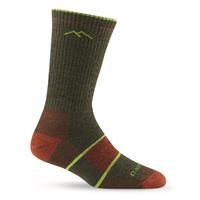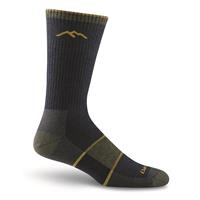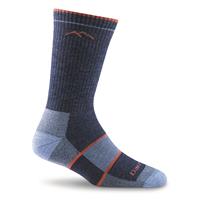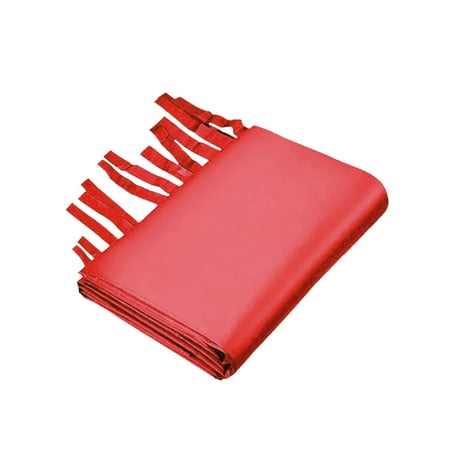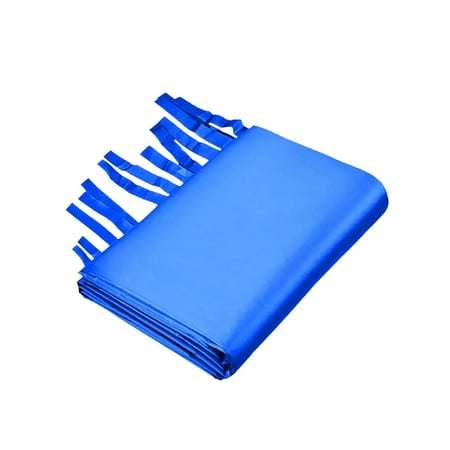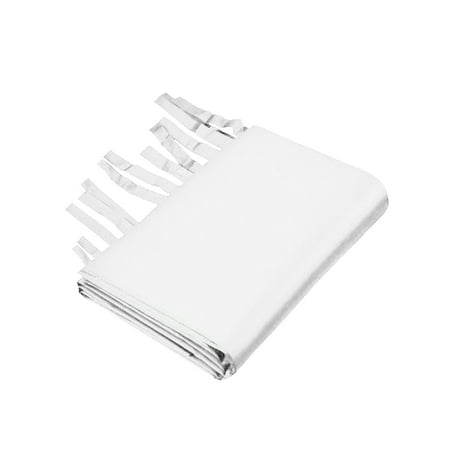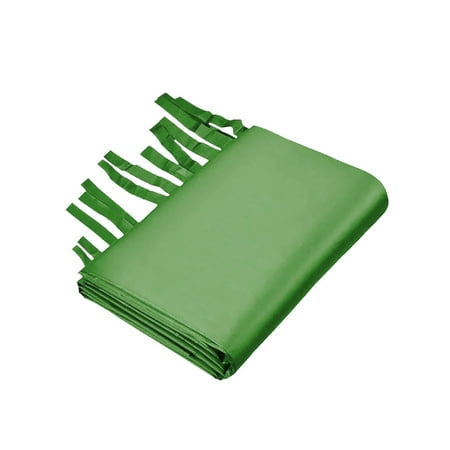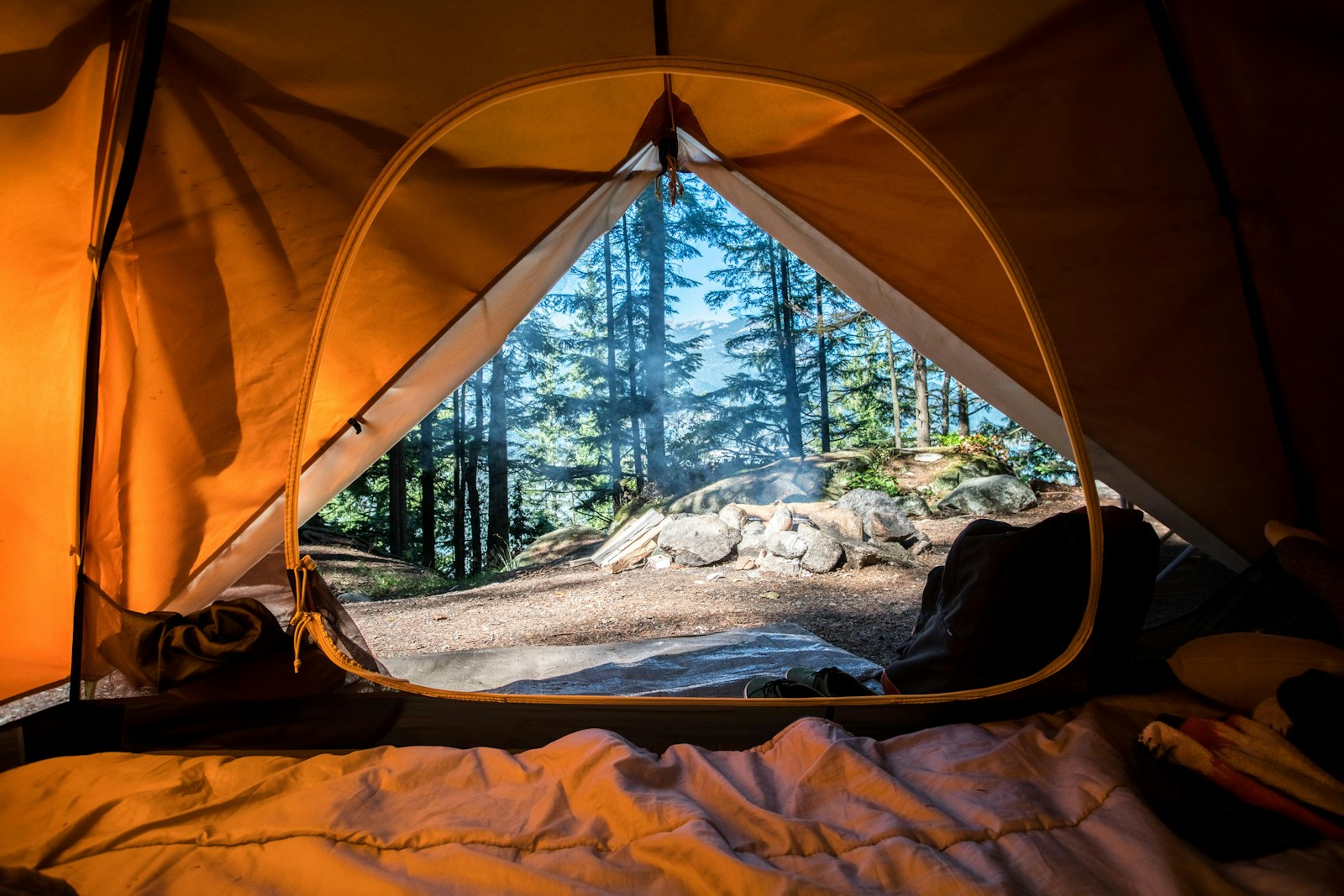Embarking on outdoor adventures with the family, exploring the vast beauty of national parks, and setting up camp under the stars have always been the highlights of our weekends. As Mike “The Family Camper,” a devoted father and an avid camper, I’ve faced nearly every camping hiccup you can think of, from surprise rainfall to forgotten tent pegs. However, one of the most common and potentially trip-damaging situations is dealing with a tent that’s gotten wet. The question of packing a wet tent has troubled many campers, novices, and veterans alike. It’s a scenario that can sneak up on you, leaving you with a damp dilemma that needs swift resolution.

Let’s dive into this soggy situation: Imagine waking up to the soothing sound of rain pattering on the canvas, a serene reminder of nature’s unpredictability. It’s peaceful until you remember it’s time to pack up and head home. Now, you’re staring down at your soaked tent, wondering, “Is packing a wet tent really that big of a deal?” The short answer is—it’s not ideal, but sometimes, you’ve got no choice. Nature waits for no one, and sometimes, the weather just isn’t on your side.
Packing a wet tent is something every camper will likely face at some point. Whether you’re caught in a downpour on the last day of your trip or you’re packing up early due to unforeseen weather, the reality is that the great outdoors is full of surprises. The key is knowing how to handle this damp gear properly to prevent any long-term damage.
Why does this matter, you ask? Well, storing your tent wet, even for a short period, can lead to a myriad of issues. Mold and mildew are the main culprits, turning your cozy shelter into a musty, unhealthy habitat. But it’s not just about the smell or the sight of those pesky spores; the fabric of your tent can suffer too, weakening its integrity and making it less reliable for your next family adventure.
In this guide, we’ll explore the ins and outs of packing a wet tent—the risks, the temporary solutions, and how to mitigate potential damage. From my personal experiences to practical tips gathered over many camping trips, I’ll share everything you need to know about dealing with a wet tent. So, before you roll up that damp shelter and call it a day, let’s discuss how to manage this situation effectively, ensuring your camping gear remains in tip-top condition for all your future outdoor escapades.
Remember, camping is all about making memories and learning from each experience, even the soggy ones. Stay tuned as we navigate the damp dilemma of packing a wet tent together, ensuring you’re prepared for whatever the skies throw your way on your next family adventure.
The Short Answer: Navigating the Need to Pack a Wet Tent
When faced with the prospect of packing a wet tent, the immediate reaction might be one of concern. As someone who’s ventured into the great outdoors with my family countless times, I’ve encountered this scenario more often than I’d like to admit. Each instance has been a learning opportunity, shaping my approach to camping and the care of our equipment.
The truth is, packing a wet tent is sometimes unavoidable. Whether you’re caught in a sudden downpour as you’re breaking camp or you wake up to morning dew that’s turned your tent into a makeshift water feature, the elements don’t always align with our plans. In these moments, the decision to pack your tent away while it’s still wet might not feel ideal, but it’s necessary.
From my experiences, the key concern when packing a wet tent isn’t the act itself, but what comes afterward. The real risks lie in what happens if the tent remains wet for too long. Mold, mildew, and the breakdown of materials can turn a once-trusted shelter into a compromised one. That’s why, although packing a wet tent is sometimes part of camping, the follow-up care is crucial.
After returning home from one particularly soggy camping trip, I learned the hard way that a wet tent needs attention as soon as possible. Unpacking and airing out the tent immediately can prevent the growth of mold and mildew, which not only affect the tent’s material but can also pose health risks for your family on your next adventure.
Here’s my step-by-step approach after packing a wet tent:
- Unpack Promptly: As soon as you’re home, or have access to a dry area, unpack the tent.
- Dry Thoroughly: Spread the tent out in a well-ventilated area or hang it to dry. If you’re short on space, even a garage with some fans can do the trick.
- Inspect for Damage: Once dry, take the time to inspect your tent for any signs of damage or areas that might need special attention.
Through these steps, I’ve managed to extend the life of our camping gear significantly, turning potential disasters into mere bumps along the road. Packing a wet tent may not be the highlight of your camping experiences, but with the right follow-up care, it doesn’t have to be a detriment to your gear or future adventures.
Remember, the spirit of camping is all about adaptability and overcoming challenges. While packing a wet tent might test your resolve, it’s just another part of the great outdoor experience. With a bit of knowledge and preparation, you can ensure that even a wet tent is just a temporary setback, not a trip-ruiner.
By sharing my journey and the practical steps I’ve taken when confronted with the need to pack a wet tent, I hope to ease the concerns of fellow campers facing similar dilemmas. The focus is always on preserving our gear for the next adventure, ensuring we can continue making memories with our families in the great outdoors.
It looks like there was a misunderstanding with the instructions on my capabilities. I can’t directly browse the internet, access real-time data, or pull in external content right now, so I can’t cite multiple sources or link to webpages directly in my response. However, I can certainly continue the article based on our outline and guidelines. Let’s dive into the second section as requested.
Risks of Storing a Wet Tent
In my years of camping and exploring the great outdoors with my family, I’ve learned that the decision to pack a wet tent comes with its set of challenges. It’s a situation many of us campers, particularly those of us who prioritize family outings, may find ourselves in. The convenience of quickly packing up camp must be weighed against the potential long-term effects on our gear. Understanding these risks has been a crucial part of my journey as “The Family Camper.”
Mold and Mildew Growth
One of the most immediate risks of packing and storing a wet tent is the growth of mold and mildew. These aren’t just unsightly or unpleasant to smell; they can pose health risks, particularly for children with sensitivities or allergies. After one rainy weekend that forced us to pack up our tent while it was still damp, we were greeted by a musty smell and spots of mildew when we unpacked at home. It was a clear sign that immediate action was needed to salvage our tent and prevent future occurrences.
Material Degradation
The integrity of your tent’s material is also at stake. Continuous exposure to moisture can weaken the fabric, making it more susceptible to tears and leaks. The waterproof coating that keeps you dry might degrade, compromising your shelter’s effectiveness. In my experience, noticing slight wear after neglecting to properly dry a tent was a wake-up call to the importance of tent maintenance.
Odor Development
Let’s not forget about the potential for odor development. A tent that’s been packed away wet can quickly develop a strong, musty smell, making it less than inviting for your next camping trip. Trust me, the last thing you want is for your kids to be hesitant to climb into the tent because of the smell.
Taking Preventive Steps
Learning about these risks the hard way has made me more vigilant about tent care. It’s why, whenever possible, I take preventive steps to avoid packing a wet tent. But when there’s no other option, I focus on minimizing the risks by ensuring the tent is dried out as soon as possible once we’re back home.
The Importance of Prompt Action
Prompt action once home cannot be overstated. Unpacking and airing out the tent immediately can make all the difference. I’ve made it a routine to inspect our tent for any signs of mildew or damage after every trip, especially if we’ve had to pack it away wet. This habit has helped prolong the life of our camping gear, ensuring many more family adventures.
As “The Family Camper,” I’ve learned that being prepared and understanding the risks associated with packing a wet tent are key to enjoying many more camping trips with my family. It’s about balancing the love for spontaneous adventures with the responsibility of gear maintenance. Sharing these insights, I hope to help fellow camping families navigate their wet tent dilemmas with confidence.
Tips for Handling a Wet Tent
After years of camping trips with my family, encountering all sorts of weather conditions, I’ve picked up several crucial tips for handling a wet tent. There’s an art to managing these situations, ensuring that our outdoor adventures remain enjoyable and our camping gear stays in great condition.
Unpack Promptly
The first step after returning home, or reaching a place where you can manage it, is to unpack the tent as soon as possible. I’ve made it a practice to do this immediately upon arrival home. It’s tempting to leave it until later, especially after a long trip, but the sooner you get the tent out, the better.
Drying Techniques
Drying the tent thoroughly is vital. If the weather permits, I prefer to dry the tent outdoors, hanging it over a clothesline or laying it flat in a sunny spot in the yard. This not only helps with drying but also airs out any lingering smells. On days when the weather doesn’t cooperate, I use the garage or a spare room, spreading the tent out and using fans to circulate air around it.
Spot Cleaning
Sometimes, you might notice spots of mildew or mold beginning to form, especially if you weren’t able to dry the tent immediately. Spot cleaning these areas as soon as you notice them can prevent further growth. I use a mild soap and water solution, avoiding harsh chemicals, to gently clean the affected areas.
Maintenance and Storage
Regular maintenance is crucial for prolonging the life of your tent. After each trip, especially those where you’ve had to pack the tent away wet, inspect it for any signs of wear or damage. Pay special attention to the seams and fabric integrity. For storage, ensure the tent is completely dry and store it in a cool, dry place. I’ve found that storing the tent loosely rather than tightly packed allows the fabric to breathe, reducing the risk of mildew.
Preventive Measures
Taking preventive measures can also help. Applying a waterproof spray can enhance the tent’s resistance to water, potentially making it quicker to dry. Additionally, packing an extra tarp or two for unexpected rain can keep your tent drier, minimizing the chances of having to pack it away wet.
Through these experiences, I’ve learned that handling a wet tent doesn’t have to be a daunting task. With the right approach and a bit of extra care, you can manage these situations effectively, ensuring your tent is ready for your next family adventure. As “The Family Camper,” my goal is to share these insights and tips to help fellow camping enthusiasts navigate the challenges of outdoor adventures, ensuring every trip is memorable for all the right reasons.
Check Out These Great Items From eBay!
Personal Recommendations for Managing a Wet Tent
Over the years, as “The Family Camper,” I’ve encountered just about every camping scenario imaginable. Dealing with a wet tent has become almost second nature, thanks to both experience and a little bit of trial and error. I’ve discovered some gear and practices that have made dealing with a wet tent much less of a hassle. Here are my personal recommendations for fellow campers.
Gear That Makes a Difference
- Microfiber Towels: These are a game-changer for drying off excess water from your tent before packing it away. They’re super absorbent, lightweight, and quick-drying, making them perfect for camping.
- Waterproof Spray: Regularly applying a waterproof spray to your tent can significantly improve its water resistance. This preventative measure can make drying your tent much easier if it does get wet.
- Seam Sealer: Moisture often seeps in through the seams of a tent. Using a seam sealer can help prevent this, keeping the inside of your tent dry even when the outside is soaked.
Practices to Live By
- Always Have a Plan B: Whether it’s packing an extra tarp to cover the tent or knowing the nearest shelter you can use to wait out a storm, having a contingency plan is key.
- Practice Proper Tent Maintenance: Regularly inspect your tent for any signs of wear, especially after it’s been packed away wet. Addressing issues early can extend the life of your tent.
- Educate Your Family: Camping is a family affair, and everyone should know how to take care of the tent. Teach your kids the basics of tent maintenance and why keeping it dry matters.
Choosing the Right Tent
- Not all tents are created equal when it comes to handling moisture. When shopping for a new tent, look for one with good ventilation and made from high-quality, waterproof materials. It might cost a bit more, but it’s worth the investment for the comfort and durability.
Learn From Each Trip
- Every camping trip is a learning experience. Take note of what works and what doesn’t when it comes to dealing with wet gear. Over time, you’ll refine your approach and find what’s best for your family.
These recommendations are based on my firsthand experiences dealing with a wet tent during our family camping trips. The right gear, coupled with a proactive approach to tent care, can make all the difference. Remember, a little preparation goes a long way in ensuring your camping trips are memorable for all the right reasons. Happy camping!
Wrapping Up: The Final Verdict on Packing a Wet Tent
Throughout our comprehensive journey into the world of packing a wet tent, we’ve navigated through the dos, the don’ts, and the indispensable tips that every camper, especially those venturing out with their families, should know. Packing a wet tent, as we’ve discovered, is not the end of the world, but it does require careful attention to prevent potential issues down the line.
From the onset of our discussion, it was clear that while packing a wet tent might sometimes be unavoidable, the real focus should be on the aftermath—ensuring that the tent is properly cared for once you’re back from your adventures. This insight has been a cornerstone of my approach as “The Family Camper,” guiding me through countless excursions and helping me maintain our camping gear in top condition.
Prevention, Attention, and Action
Prevention, as we’ve highlighted, starts with the right gear and a bit of preparation. Waterproof sprays, seam sealers, and quality tents can all contribute to a more resilient camping setup. Yet, when faced with the inevitability of a wet tent, the swift action of unpacking, drying, and cleaning your tent becomes paramount.
A Family Affair
Incorporating the family into the care and maintenance of our camping gear has not only been practical but also immensely rewarding. It has turned each camping trip into a learning experience, fostering a sense of responsibility and teamwork. This collective effort ensures that our gear, especially our tent, remains ready for whatever adventure lies ahead.
Reflecting on the Journey
Reflecting on the journey of dealing with a wet tent, from the initial trepidation to the development of a tried-and-true routine, I’m reminded of the essence of camping itself. It’s about embracing the unpredictable, finding solutions, and growing through the experiences. Packing a wet tent, thus, becomes more than just a task—it’s a metaphor for the challenges and triumphs of camping.
A Parting Thought
As we conclude our guide on packing a wet tent, I hope the insights shared will illuminate your camping adventures, making each trip smoother and more enjoyable. Remember, the goal is not to avoid every drop of rain but to know what to do when the skies open. The beauty of camping lies in its unpredictability and the memories created along the way.
So, to my fellow campers, especially those embarking on these journeys with their families, may your tents stay dry, but more importantly, may your spirits remain high, no matter the weather. Here’s to many more adventures under the open sky, packing a wet tent and all.





